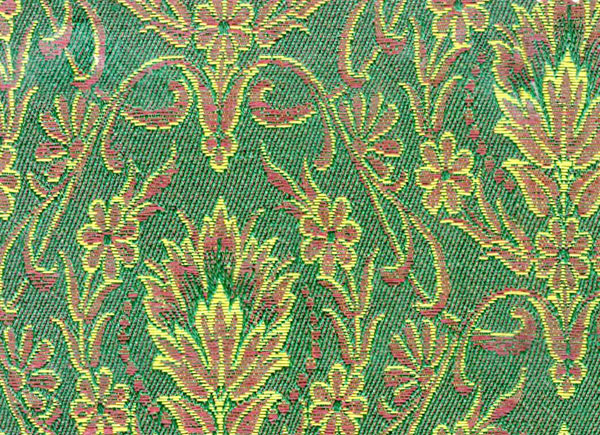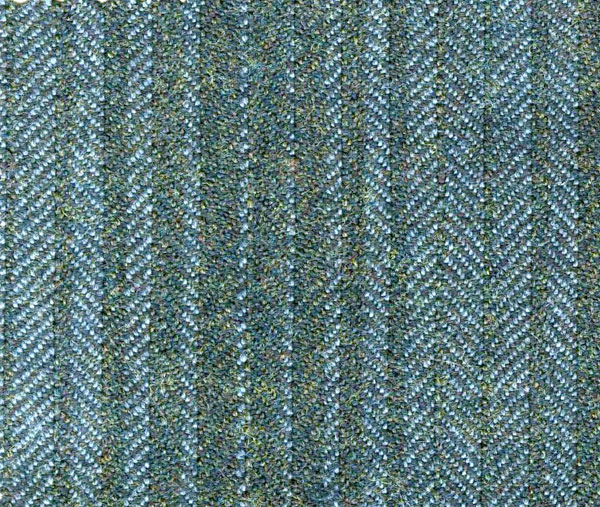As 2014 advances and preparations are well underway for the many nationwide events to commemorate the Centenary of The Great War, it is with great pride that Bradford College Textile Archive remembers the staff and students of the City of Bradford Technical College, particularly the staff and students within the Department of Textile Industries.
The archive is extremely fortunate to hold student workbooks of this era. Two of these, Pattern Books compiled by Reginald Greenwood Oversby during his Pattern Distribution class are an absolute feast for the eyes as well as an invaluable source of inspiration for all designers. Time restraints force me to limit my attentions of the fabulous pattern swatches to just one from each book; the first a figured jacquard from 1916 and the second a worsted herringbone twill from 1915.
 The figured jacquard design is categorised by Reginald as an ‘artificial silk style’ with the following technical details:
The figured jacquard design is categorised by Reginald as an ‘artificial silk style’ with the following technical details:Warp: – 80/2 Green Spun Silk 40s reed 4s
40s Reed 4s
Weft: – 1 pick 120 Den Red Art Silk
1 pick 120 Den Yellow Art Silk
Loom 28½ “ Fin 27¼”
Although labelled an ‘artificial silk style’ this organically inspired ‘pick & pick’ design is constructed with a pure silk solid green warp creating a twill structure with alternating red and yellow artificial silk weft picks; the weft floating to create the design figuring. Unfortunately, one whole surface of the fabric has been stuck down in Reginald’s book so it is not possible to show both sides.
Technically a ‘union cloth’ as it unites silk with artificial silk, it’s intriguing that Reginald emphasised the artificial silk weft. This is not a combination we would readily put together today, but, of course, we don’t need to. We have to remember yarns and fibres were hard to source and distribute during the war; Reginald’s first pattern book was made to last three years of his education instead of the usual one. It’s worth mentioning the English count of the warp yarn and continental count of the artificial weft yarns.
But I also wonder if artificial yarns were more prized at this time because of technical advancements? Quick online research advises me that viscose had been patented in 1894; with Courtaulds commencing commercial manufacture by 1906 in the UK - taking a few more years to improve the strength of the yarn. I wonder when the college begin to experiment with artificial yarns and continental yarns?
Fortunately, we hold many earlier student workbooks with lecture notes, fabric samples & technical details, and further investigation of these may provide the answer… We also hold all the Wool Record issues from the Great War, and these may contain articles about the early use of viscose and rayon.
 The second pattern swatch I have chosen is worsted herringbone twill, categorised by Reginald as a Fancy Suiting or Costume Cloth. He records the technical details so it would be easy to replicate it today:
The second pattern swatch I have chosen is worsted herringbone twill, categorised by Reginald as a Fancy Suiting or Costume Cloth. He records the technical details so it would be easy to replicate it today:Warp: – 2/24s Cold Boty Lt & Dark
11s Reed 4s
Weft: – 2/24s Cold Boty
44 pks per 1”
66” Reed Width. 56” Fin. Width
Warping Plan:-
Dark 10 8 6 4 2 2 4 6 8 10
Light 2 4 6 8 10 10 8 6 4 2
Our student pattern books hold many exquisite worsted designs, the fabric most synonymous with Bradford and these timeless designs in Botany yarns are still very marketable today. But this particular design stood out because it had a date written in pencil above it; 15th April 1915. It is possible that Reginald was recording the date he designed or wove the fabrics on this page, or perhaps the date he stuck them in his Pattern Book, but this was very unusual. In the three years Reginald used this book, 1914, 1915 & 1916; this page of samples was the only one he dated.
The Bradford Technical College student collection is without doubt the most personal of all the collections in the archive. Handwritten lecture notes and hand painted designs and peg plans were recorded in specially printed books with embossed covers, there’s an obvious sense of pride shown in the neatness of the handwriting and layout of each page. And on the front page of each book, each student recorded their own individual name; real people who were living real lives, real people learning a profession, real people we can research today. National records show Reginald’s birth was registered in the first three months of 1898 and so he would have been just 17 years old when he recorded the date in this book.
As one of the young men supporting the continuation of the so-important textile industry in Bradford, manufacturing khaki etc. for the troops, he surely must have known family, friends and neighbours who had volunteered to ‘join up’ and many more when conscription began in January 1916. Pre TV and radio, Reginald would be following the events of the war in the broadsheets of the day; no doubt discussing the latest news with his professors and fellow students between lectures.
15th April 1915 was clearly a significant date for Reginald; war events of the day included the landing of British troops at Seddul Bahr in Gallipoli and the bombing of Freiburg and Ostend by the Allies. Perhaps Reginald had waved a loved one off to Gallipoli. Perhaps he received other news that day…
15th April 1915 was also the third anniversary of the sinking of the Titanic.
Today, one hundred years later, all dates between 28th July 1914 and 11th November 1918 are still extremely significant. It is important that we remember all the men and women who contributed to the ‘war effort’; those who went to defend us, those who nursed the injured and dying, those who manufactured khaki in the Bradford mills and those who ‘kept the home fires burning’.
Lest we forget.